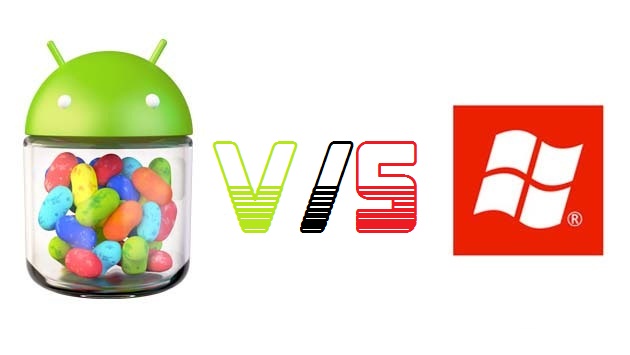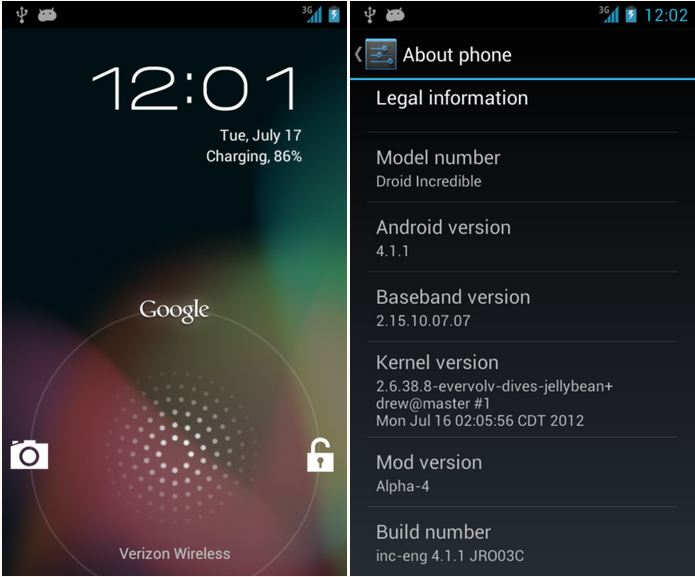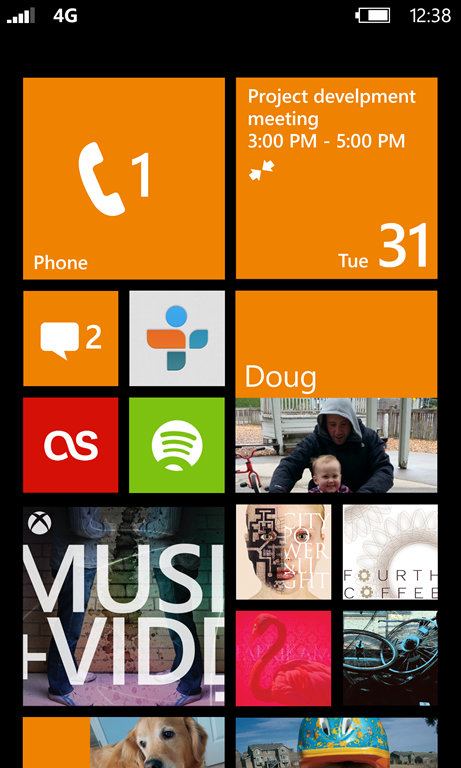
Android 4.1 Jelly Bean, Google’s advanced and stylish upgraded version of Android 4.0 Ice Cream Sandwich which was announced couple of months ago with Nexus 7 Tablet And Nexus Q.
But technoholics are saying that that all could be about to change with Microsoft’s Windows Phone 8 competitor, which is expected to arrive towards the end of 2012. Is that really true ? In this comparison we stack the two up against each other to see which one has the advantage. Its Android 4.1 V/S Windows 8.
Interface and aesthetics
Google has made considerable improvements on what was already impressive groundwork laid-out by the previous builds, version Android 4.0 Ice Cream Sandwich (ICS) and the tablet-exclusive 3.2 Honeycomb.
Jelly Bean creates a very modern and almost sci-fi base to work from, but from here Android has put a contemporary spin on things with plenty of idiosyncratic elements, such as the wallpapers, seemingly inspired by art and the popular culture of all things ‘quirky’.
In a similar vein, Windows Phone 8 is expanding on what Microsoft started with Windows Phone 7, the distinctive ‘Metro’ user-interface (UI), which has now expanded to most areas of Microsoft’s portfolio. The Metro UI comprises a continuously scrollable black or white screen that is populated with a selection of square or rectangular ‘Live Tiles’.
In Windows Phone 8 you can now include many more Live Tiles on the screen space as tiles are now customisable – you can shrink them down so that four will take up the space of a standard tile, or you can expand them into a large rectangle taking up two regular tiles worth of space (or eight mini-tiles).
This means Microsoft has introduced a level of customisation more in-line with what people expect from Android.
Microsoft has said Live Tiles can now display much more information than before, including pictures, though, this will depend on the type of app a particular Live Tile represents and how big you set it to be.
Jelly Bean has an improved drop-down notifications menu, which means you can now easily access your settings from here and it allows you to expand any alerts using a simple gesture control. This means you can, for example, read an entire text message in the notifications bar rather than going right into an app.
Another great element brought across from the two previous builds is Jelly Bean’s fast app switcher. For a long time Android has been regarded as one of the best platform for multi-tasking, but with the app-switcher it has become much more accessible.
Overall Android jelly Bean is a way ahead of the Windows 8 upcoming system.
Performance
As with Ice Cream Sandwich, on Jelly Bean the whole setup is much more stable and reliable than earlier versions and, importantly, it runs a lot faster.
However, Google has managed to bump things up a notch even on ICS’s impressively smooth operating performance thanks to the implementation of what it calls the ‘Butter UI’, a series of tweaks which means everything glides along. It’s now safe to say that Jelly Bean performs as well as both iOS and Windows Phone, two systems long held to be better optimised. Windows Phone never suffered from performance issues when running thanks to excellent optimisation.
That said, the top-end power for things like gaming and intensive multi-media has always been a little behind Android because of Microsoft’s hardware restrictions – Qualcomm single core processors with a top speed of 1.4GHz and 512MB of RAM.
With Windows Phone 8 that’s all set to change and we should see it closing the gap with the dual and quad core Android devices already on the market.
This also extends to device displays and you can expect Windows Phone 8 handsets to sport higher resolutions up to 720p.
Android may currently be king of multi-tasking but with support for multi-core processors there’s a good chance Windows Phone 8 will be able to offer a competitive alternative, particularly when you consider what Microsoft has done in this area with Windows 8 for tablets.
But it’s not just about raw muscle. Microsoft has included a number of additions to what it terms its Shared Windows Core – the suite of features which both Windows Phone 8 and Windows 8 are built around.
In this both systems are looking to be similar so its tie here.
Usability
One of the most distinguishing features of
Android Jelly Bean is the addition of Google Now, a new service that integrates Google’s search tools, Google Voice and a number of other interesting elements to provide a really useful platform.
For the most part, it seems as though Google was aiming to take down Apple’s Siri assistant (and we think it has succeeded, for now). The voice control and responsiveness is excellent and generally far more usable than Siri in our experience so far.
But more than that, Google Now periodically feeds you relevant information based on you and your location via a handy card interface and this is very useful for avoiding traffic jams or getting weather reports.
So far, Microsoft has revealed it has been working extensively on voice control and has integrated technology from Audiable. According to Microsoft’s announcement, Windows Phone 8 will support an extensive range of voice applications. But all these efeatures are still in air for Windows.
So Android Jelly Bean is getting great lead here.
Conclusion
With Jelly Bean, Google has made a handful of very significant changes to the fundamental way in which users interact with the platform. The result is a much more rewarding experience than previous builds and much of this is down to the smoothness and stability.
Features such as Google Now and the interface changes are welcome additions but the overall performance is what makes Jelly Bean stand out as it has brought the platform to the forefront of viable operating systems.
Microsoft is clearly aiming for a game-changer with Windows Phone 8. There are many more sweeping changes than on Android Jelly Bean, but in some ways this is because it’s playing catch-up for things like interface customisation and hardware support.
It is, however, paving the way for more substantial advances with support for more complex apps, games and services already wired in and it could prove to be a more dynamic and engaging system in the long run.



